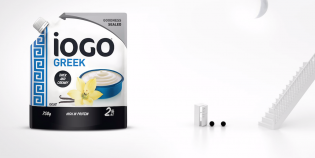Mix one food blogger with one petition, add a big food chain and what have you got? A recipe for potential PR disaster.
When North Carolina food blogger Vani Hari launched a petition last month calling for Subway to stop using azodicarbonamide—a chemical used used as a blowing agent in rubber and plastic products—in its sandwich breads, signatures came flooding in. To date, nearly 100,000 people have supported the petition.
The chemical is said to help make dough more pliable and keeps the finished products stay intact during shipping. Hari—who blogs using the name “Food Babe”—says it’s “the same stuff used in yoga mats, shoe rubber and synthetic leather.”
Hari claims Subway didn’t reply to her several attempts to reach the company about why it’s using the chemical until after she started the petition. Then, when the company did reply, it told Hari it would be removing the ingredient from its products “soon” (too vague an answer for Hari’s liking). She was also told that Subway was already in the process of taking the chemical out of her bread as part of ongoing improvement measures.
Marketing asked two food industry PR experts to share their thoughts on Subway’s reaction, what it might have done differently to address the petition and what the “yoga mat chemical” could mean for food retailers or manufacturers now that hundreds of other food items reportedly use the same one.
Virginia Jenkinson [Zimm], President, Faye Clack Communications
Did Subway dodge a PR nightmare?
In an immediate sense, they bent to Food Babe’s suggestion, but given that at least 500 other manufacturers use this additive, this is not an issue that will go away anytime soon. As well, they left the impression that despite the USDA position that the additive is “generally regarded as safe,” Food Babe has a made case that it may not be. This, despite her “extensive research” being anything but, and totally lacking scientific integrity.
What might the new list of hundreds of other items that use the same compound mean for other food manufacturers and retailers?
The problem is that the “yoga mat chemical” moniker is intentionally used by Food Babe to make people believe they have plastic added to their food. In reality, it merely adds air to the bread to make it have more volume (be fluffier), as well as some lightening of its colour. Azodicarbonamide is an aerating or leavening compound. By suggesting that people might as well eat their yoga mats as eat foods produced with this leavening agent, Food Babe is deliberately misleading the public to gain traction for her own celebrity and website. Unless others point out this pseudoscience, she will continue to pressure these corporations until she is exposed as intentionally misleading people in the court of public opinion.
What should Subway communicate to the public about its upcoming plans?
Ideally, Subway should communicate to the public a clarification of the differences between the reality of what they are doing and the fallacious comments made by the food blogger in order to shut down an “opinion trumps scientific facts” campaign that misleads the public and creates misinformation that is publicly seen as accurate.
They might access someone with scientific credentials, like Monica Reinagal, MS, LDN, CNS, a board certified, licensed nutritionist and chef who could address the reality of the chemical additive with science rather than saying “I can’t spell it or pronounce it so it must be bad” as the “credentially challenged” Food Babe attests.
Is there anything Subway should have done differently in its response to the petition?
Unfortunately, the short-sighted knee jerk response they took does nothing to prevent a broad campaign that gains strength merely from the simple belief of manufacturers that it may be easier to comply with her requests than to defend the use of the ingredient.
Barbara Jesson, President, Jesson + Company Communications
Did Subway dodge a PR nightmare?
Subway appears to employ a reactive strategy rather than taking a leadership posture in terms of their food integrity. Moreover, their response to this and other crises (remember the “foot-long” issue that emerged a few years ago?) reveals a desire to leave wiggle room so they can dodge complaints that they haven’t met deadlines or other promises of change.
Usually these kinds of initiatives fail because they do not shut down the questions and frequently lead to more. Their strategy, such as it is, acknowledged the issues and stated that efforts to eliminate the azodicarbonamide have been underway for some time without explaining why they had undertaken the initiative. By leaving the whole question open-ended, they could be facing a much larger issue down the road.
What might the new list of hundreds of other items that use the same compound mean for other food manufacturers and retailers?
I think that we can anticipate that this will only continue to grow as consumers become more aware and health research findings point to concerns such as this. To be ahead of the curve, companies need a higher sense of accountability. They need to lead, not respond, and identify ingredients that could potentially invite this kind of criticism. And responses and reactions must be thoughtful in addressing consumer concerns.
As we can see from the wave of pressure to reduce transfats, sodium and sugar, issues around MSG, Aspartame, and other additives, consumers are paying more attention to what they take in with their food. Companies that fail to heed this and address it could well find themselves with a failed business model.
What should Subway communicate to the public about its upcoming plans?
The company needs to get out ahead in its commitment to ethical food standards. Transparency is key. Identify Subway leadership in the field of food quality and safety. Talk up innovation. And close the door on speculation of waffling by setting clearly achievable goals and deadlines—then meet them. Use this as an opportunity to focus attention on their commitment to and progress towards establishing Subway as the benchmark for a healthier fast food option.
What the company requires, in my view, is a very clear ethics statement and demonstrable track record that the safety and integrity of their products is their number one business priority. For example, the fast food company Chipotle Mexican Grill makes it a priority to serve the very best ingredients with the mission statement “Food with Integrity.” It is that dedication that has propelled Chipotle growth internationally.
Is there anything Subway should have done differently its response to the petition?
Subway should develop an ongoing dialogue with consumers through traditional and social media laying out its directions and milestones in achieving them. Get out in front of this with strategies that quickly shut down this issue, demonstrate that it is using this as a learning experience to redefine its product. But honesty is key. There would be nothing worse than a disingenuous communication strategy. I am sure Subway has some kind of crisis communications plan in place, but most of these were developed in an old paradigm universe. Today companies really need a 2.0 strategy that functions in the real-time social media universe.










